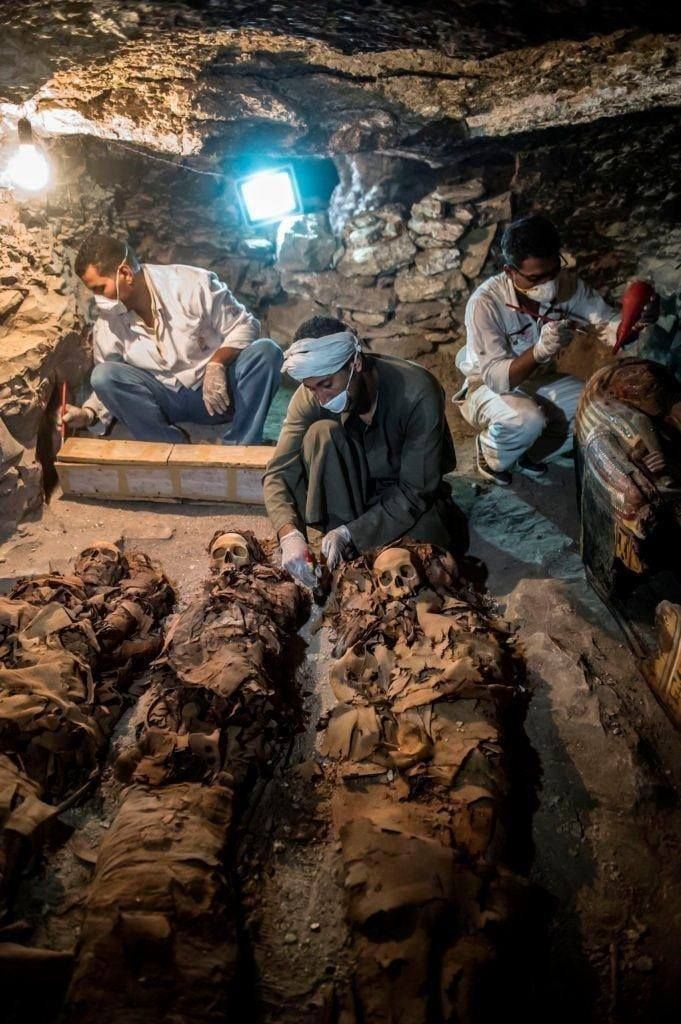The continuous drumbeat of archaeological discoveries in Egypt has once again captured the world’s attention. The Egyptian Ministry of Antiquities recently announced the unearthing of an ancient tomb belonging to a goldsmith named Amenemhat. This significant find is the latest in a series of archaeological discoveries within the Draa Abul Naga necropolis, located near the renowned Valley of the Kings in Luxor. Positioned approximately 400 miles south of Cairo along the Nile River, this region continues to reveal insights into Egypt’s rich history and culture.

Minister of Antiquities Khaled al-Anani, in a statement reported by the BBC, highlighted the array of artifacts discovered both inside and outside the tomb. “We found many objects of the funerary equipment inside and outside the tomb,” he stated. Among these objects were mummies, intricately decorated coffins, funerary combs, masks, jewelry, and statues. These findings provide a glimpse into the burial practices and artistic craftsmanship of ancient Egyptian society.
Lead archaeologist Mostafa Waziri emphasized the significance of the discovery being made by an Egyptian team, underscoring the nation’s growing expertise in the field of archaeology. “We used to escort foreign archaeologists as observers, but that’s now in the past,” Waziri told the Daily Mail. “We are the leaders now.” This statement reflects Egypt’s commitment to reclaiming its heritage and leading efforts to uncover its past.
Estimated to be approximately 3,500 years old, the tomb dates back to the 18th dynasty of ancient Egypt. Amenemhat, the tomb’s occupant, was a jeweler whose craft was dedicated to Amon-Re, the chief deity of ancient Egypt. Within the tomb, archaeologists discovered a statue depicting Amenemhat alongside his wife, with their son positioned between them. This depiction reflects the importance of family in ancient Egyptian culture. Additionally, the site contained 150 small funerary statues made from wood, clay, and limestone, each meticulously carved to accompany the deceased in the afterlife.
Two separate burial shafts were also discovered within the tomb, each containing mummies. The team unearthed later sarcophagi dating back to the 22nd and 21st dynasties, revealing that the tomb had been reused across different periods of Egypt’s history. However, the identities of the mummies remain uncertain. “We are not sure if these mummies belong to Amenemhat and his family,” Waziri told the New York Times. The presence of uncovered heads suggests that the tomb had been disturbed in ancient times, possibly by tomb robbers or individuals seeking to repurpose the burial site. “Others have clearly reused this tomb and poked around in ancient times,” Waziri noted. This reuse of tombs was not uncommon in ancient Egypt, as subsequent generations often adapted existing burial sites for their own needs.
The discovery of Amenemhat’s tomb follows a series of other recent archaeological finds in the region, further solidifying Luxor’s status as a treasure trove of ancient history. In November of the previous year, archaeologists uncovered a lost city believed to be Egypt’s first capital. Then, in April, a Japanese team unearthed a 3,500-year-old tomb belonging to an ancient Egyptian nobleman named Userhat. Interestingly, it was during work on Userhat’s tomb that archaeologists found clues leading to the location of Amenemhat’s burial site, as reported by CNN. These discoveries demonstrate the interconnected nature of archaeological research, where one find often leads to another, gradually piecing together the puzzle of ancient Egypt’s past.
Egyptian authorities hope that the excitement generated by these archaeological discoveries will help revive the nation’s tourism industry, which has suffered since the political upheaval following the 2011 ousting of former president Hosni Mubarak. In the years since, Egypt has faced challenges ranging from political instability to incidents of terrorism, including car bombings and other attacks. However, the resurgence of interest in Egypt’s archaeological heritage is showing promising results. According to the New York Times, the recent wave of discoveries has led to a remarkable 170 percent increase in tourism between January and July. This surge in visitors underscores the enduring fascination that ancient Egypt holds for people worldwide.
For Waziri and his team, the discovery of Amenemhat’s tomb represents just the beginning. “This is not the end,” Waziri stated. “This will lead to more discoveries in the future.” His words reflect the ongoing nature of archaeological work, where each new find opens the door to further exploration and understanding. The Draa Abul Naga necropolis, with its rich history and numerous burial sites, is likely to yield even more treasures in the years to come.
As archaeologists continue their work in Luxor and beyond, the discoveries they make not only enhance our understanding of ancient Egyptian civilization but also contribute to the country’s cultural and economic revival. The uncovering of Amenemhat’s tomb serves as a testament to the skill and dedication of Egypt’s archaeologists, whose work ensures that the stories of the past are preserved for future generations. With each new find, the sands of Egypt continue to reveal the secrets of a civilization that has captivated humanity for millennia.





